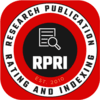Challenges faced by female psychologists in the Guidance and counselling women in understanding self-Concept in stereotyping and individual differences.
Abstract
The present study experimentally investigated to understand the challenges that the female psychologists face in guiding and counseling women in understanding the selfconcept in stereotyping and individual differences. Female psychologists (N=60) were been interviewed who has more than 10-yearexperience in the field of counseling. This research specifies more on what their understanding on gender stereotyping, their representation and representation of women in portrayal of gender based social roles.Research questions that extensively discussed among the psychologists are the socialization experiences that women experience while counseling, identify aspects of own socialization as a female guiding and counseling other women, did she able to help and support women in psychological need. What happened in situations when women crossed gender rules, psychological and emotional stress?Research methods used in the present study was in analyzing direct communication with the psychologists, their case reports and text analysis and unobstructive observation and case studies. The findings of the study emphasized that women had been given gender identity and self-perceptions in their childhood having an impact on their self-esteem and conflicts in their life. The female psychologists faced lots of challenges in remolding the personality traits such as removing aggression, prosocial behavior, inferentiality, emotionality and moral reasoning.
References
Abrams, L. S. (2003). Contextual variations in young women’s gender Identity negotiations. Psychology of Women Quarterly, 27, 64 –74.
Ackerman, R. J. (1999). An interactional approach to pharmacopsychologists and psychologists: Gender concerns. Journal of Clinical Psychology in Medical Settings, 6, 39 – 47.
Adams, D. L. (Ed.). (1995). Health issues for women of color: A culturaldiversity perspective. Thousand Oaks, CA: Sage.Addis, M. E., & Mahalik, J. R. (2003). Men, masculinity, and the contextsof help seeking. American Psychologist, 58, 5–14.
Alexander, L. L., LaRosa, J. H., & Bader, H. (2001). New dimensions inwomen’s health (2nd ed.). Boston: Jones & Bartlett.Altmaier, E. M., Fraley, S. S., Homaifar, B. Y., Maloney, R., Rasheed, S.,& Rippentrop, A. E. (2003). Health counseling: Assessment and inter-vention. In M. Kopala & M. E. Eitel (Eds.), Handbook of counselingwomen (pp. 323–344). Thousand Oaks, CA: Sage.
Altman, L. K. (1997, June 22). Is the longer life the healthier life? NewYork Times, p. WH 158.
Alvidrez, J., & Azocar, F. (1999). Distressed women’s clinic patients:Preferences for mental health treatments and perceived obstacles. Gen-eral Hospital Psychiatry, 21, 340 –347.
American Association of University Women Educational Foundation.(2001). Hostile hallways: Bullying, teasing, and sexual harassment inschool. Washington, DC: Author.American Psychiatric Association. (2000). Diagnostic and statisticalmanual of mental disorders (4th ed., text rev.). Washington, DC:Author.
American Psychological Association. (1975). Report of the Task Force onSex Bias and Sex-Role Stereotyping in Psychotherapeutic Practice.American Psychologist, 30, 1169 –1175.
American Psychological Association. (1978). Guidelines for therapy withwomen: Task Force on Sex Bias and Sex Role Stereotyping in Psycho-therapeutic Practice. American Psychologist, 33, 1122–1123.
American Psychological Association. (1979). Principles concerning the coun-seling and psychotherapy of women. Counseling Psychologist, 8, 21.
American Psychological Association. (1991). Resolution on substanceabuse by pregnant women. Washington, DC: Author.
American Psychological Association. (1996). Violence and the family:Report of the American Psychological Association Presidential TaskForce on Violence and the Family. Washington, DC: Author.
American Psychological Association. (2000a). The behavioral health careneeds of rural women. Washington, DC: Author.
American Psychological Association. (2000b). Guidelines for psychother-apy with lesbian, gay, and bisexual clients. American Psychologist, 55,1440 –1451.
American Psychological Association. (2000c). Resolution on poverty andsocioeconomic status. Washington, DC: Author.American Psychological Association. (2000d). Resolution on women andpoverty. Washington, DC: Author.
American Psychological Association. (2001). Publication manual of theAmerican Psychological Association (4th ed.). Washington, DC: Author.
American Psychological Association. (2002a). Criteria for practice guide-line development and evaluation. American Psychologist, 57, 1048 –1051.
American Psychological Association. (2002b). Ethical principles of psy-chologists and code of conduct. American Psychologist, 57, 1060 –1073.
American Psychological Association. (2002c). Intimate partner abuse andrelationship violence. Retrieved December 13, 2003, from http://www.apa.org/pi/iparv.pdf
American Psychological Association. (2002d). Summit on women anddepression. Washington, DC: Author.
American Psychological Association. (2003). Guidelines on multiculturaleducation, training, research, practice, and organizational change forpsychologists. American Psychologists, 58, 377– 402.
American Psychological Association. (2004a). Guidelines for psycholog-ical practice with older adults. American Psychologist, 59, 236 –260.
American Psychological Association. (2004b). Resolution on culture andgender awareness in international psychology. Washington, DC: Author.
American Psychological Association. (2005). Resolution on male violenceagainst women. Washington, DC: Author.
American Psychological Association Task Force on Women, Poverty, andPublic Assistance. (1998). Making welfare to work really work. Wash-ington, DC: Author.Ancis, J. R., & Ladany, N. (2001).
A multicultural framework for coun-selor supervision. In L. J. Bradley & N. Ladany (Eds.), Counselorsupervision: Principles, process, and practice (3rd ed., pp. 63–90).
Philadelphia: Brunner-Routledge.Anderson, K. M., Sharpe, M., Rattray, A., & Irvine, D. S. (2003). Distressand concerns in couples referred to a specialist infertility clinic. Journalof Psychosomatic Research, 54, 353–355.
Angold, A., Erkanli, A., Silberg, J., Eaves, L., & Costello, E. J. (2002).Depression scale scores in 8 –17-year-olds: Effects of age and gender.
Journal of Child Psychology and Psychiatry and Allied Disciplines, 43,1052–1063.
Apter, T. (1996). Path of development in midlife women. Feminism andPsychology, 6, 557–562.
Armstrong, M. J. (2001). Ethnic minority women as they age. In J. D.Garner & S. O. Mercer (Eds.), Women as they age (2nd ed., pp.97–111). New York: Haworth.
Arroyo, J. A., Simpson, T. L., & Aragon, A. S. (1997). Childhood sexualabuse among Hispanic and non-Hispanic White college women. Journal of Behavioral Sciences, 19, 57– 68.
Avis, N. E. (2003). Depression during the menopausal transition. Psy-chology of Women Quarterly, 27, 91–100.
Bachanas, P. J., Morris, M. K., Lewis-Gess, J., Sarett-Cuasay, E. J., Sirl,K., Ries, J. K., & Sawyer, M. K. (2002). Predictors of risky sexualbehavior in African American adolescent girls: Implications for pre-vention intervention. Journal of Pediatric Psychology, 27, 519 –530.
Ballou, M., & Brown, L. S. (Eds.). (2002). Rethinking mental health anddisorder: Feminist perspectives. New York: Guilford.
Ballou, M., Matsumoto, A., & Wagner, M. (2002). Toward a feministtectological theory of human nature: Theory building in response toreal-world dynamics. In M. Ballou & L. S. Brown (Eds.), Rethinkingmental health and disorder: Feminist perspectives (pp. 99 –141). NewYork: Guilford.
Ballou, M., & West, C. (2000). Feminist therapy approaches. In M.Biaggio & M. Hersen (Eds.), Issues in the psychology of women (pp.273–297). New York: Kluwer Academic/Plenum.Banks, M. E., & Kaschak, E. (2003). Women with visible and invisible









